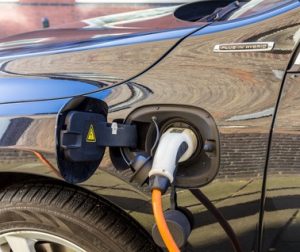Choosing a new vehicle can be difficult at the best of times, but it is even harder if you are trying to get to grips with all of the different types of hybrid vehicles that are on the market. It can become even harder to understand what type of vehicle would be best for your needs when you can only find articles which seem to be written in riddles and code-like acronyms. This article will attempt to explain the main differences between traditional hybrids and other types of electric vehicle.
Traditional Hybrid Vehicles
Traditional hybrid vehicles are vehicles with a normal internal combustion engine and an electric battery. It is not usually possible to recharge this battery remotely, but it is recharged by the vehicle itself whilst the car is in motion.
The design of the car includes non-traditional vehicle components which are designed to convert wasted energy so that it can be reused to power the car. Depending on the model, hybrids operate in different ways. Some models must be used in dual power mode, where the electric battery serves to reduce the amount of petrol that is used. On the other hand, some hybrids will store enough energy that the battery can be used to power the vehicle alone on short journeys, such as point to point travel within a city.
Plug-in Hybrid Electric Vehicles (PHEV)
 Plug-in Hybrid vehicles also combine an electric motor with a traditional internal combustion engine. However, plug-in electric motors are charged up by plugging the vehicle into a special power station. These vehicles only have a limited range when they are being operated in electric power mode, but they can be switch to traditional fuel power when the electric motor is unable to provide power anymore.
Plug-in Hybrid vehicles also combine an electric motor with a traditional internal combustion engine. However, plug-in electric motors are charged up by plugging the vehicle into a special power station. These vehicles only have a limited range when they are being operated in electric power mode, but they can be switch to traditional fuel power when the electric motor is unable to provide power anymore.
The average range for these vehicles when they are being used in electric mode is around 35 miles. When the vehicle is being used in electric power mode, there are no tailpipe emissions; however emissions levels are standard when the car is being driven in traditional fuel mode. This type of vehicle is ideal of city driving, because they are most efficient when they are being driving in this environment.
Battery Electric Vehicles (BEV)
Battery-operated electric vehicles run entirely on their electric battery. They do not have an alternative fuel source to switch to if the charge of the battery runs down. They are charged using standard charge stations, but they need to be allowed to charge for much longer in order to get the battery to maximum capacity. This helps the vehicle to have a longer range than most of the PHEV vehicles that are on the market.
The average BEV car has a range of around 80 miles before it needs to be recharged, although some outliers are able to travel up to 200 miles if they are being driven efficiently. The cars with the highest range tend to be a lot more expensive than models which are able to travel less far. Although 80 miles between charges may seem as though it is a short distance, market research has shown that about two-thirds of all families would only need to charge their vehicle once per week in order to cover all of their commuting, school runs, shopping trips and miscellaneous transport needs. In fact, most families would only actually find the range to be a problem if they needed to go on long journeys frequently. Having a charging point at home will allow most sensible owners to stay adequately topped up.
Those who are considering getting a BEV are recommended to do some research into the electric vehicle infrastructure of the places that they are most likely to visit. They are ideal for people who make a lot of short distances journeys. One of the most beneficial things about BEV models is that they do not produce any tailpipe emissions. Whilst emissions may be created remotely during the electricity generation process, savvy environmentalists can make sure that their vehicle is charged using electricity from renewable sources or low emissions fuel types.
Fuel Cell Electric Vehicles (FHEV)
FHEV cars are powered by an electric motor which is charged-up by combining hydrogen and oxygen to create a chemical reaction. The fuel cell draws in oxygen from around the vehicle which reacts with stored hydrogen. Electricity is generated which powers the motor and moves the vehicle. There are zero harmful emissions from the vehicle during this reaction, although water is produced as a waste by-product.
The hydrogen cell must be topped-up in a similar way to the way that traditional fuel vehicles are topped-up, although the process of filling the cell does take a few minutes longer than it takes to top-up a fuel tank. The production of hydrogen for these fuel cells creates about the same emissions levels as charging a plug-in vehicle with fossil fuel electricity.

